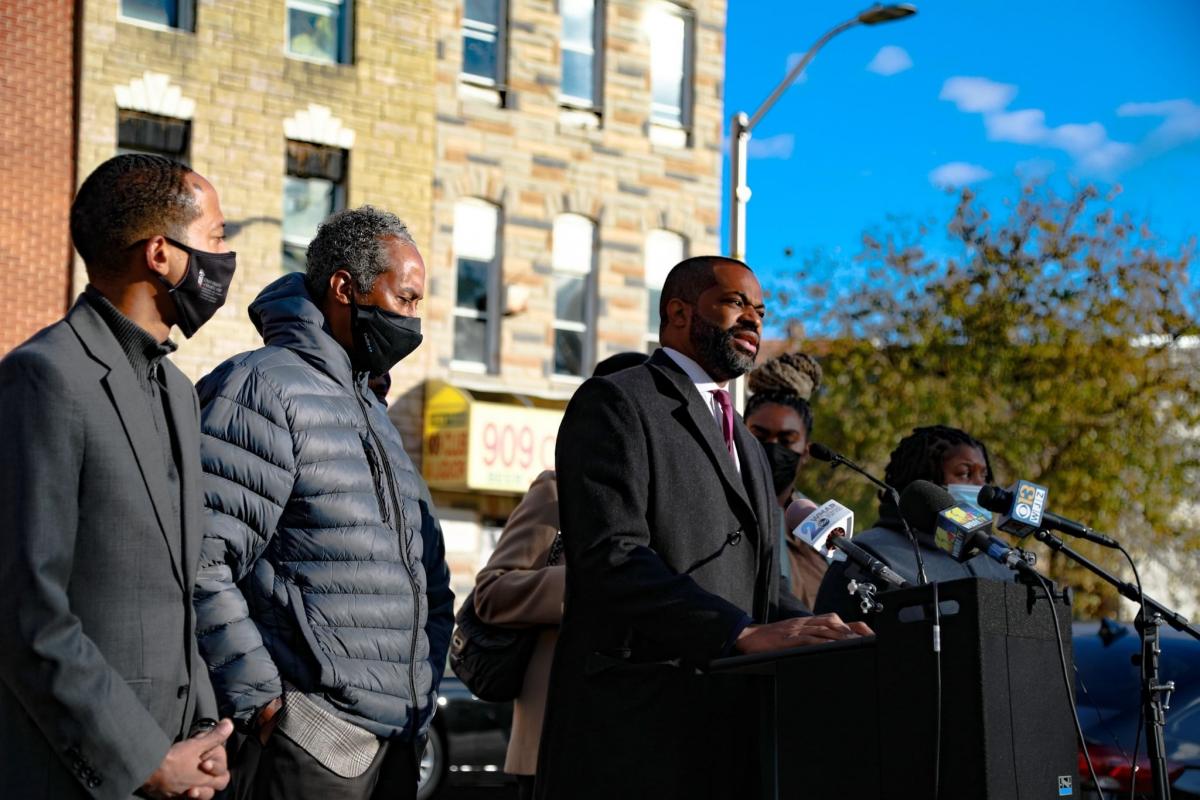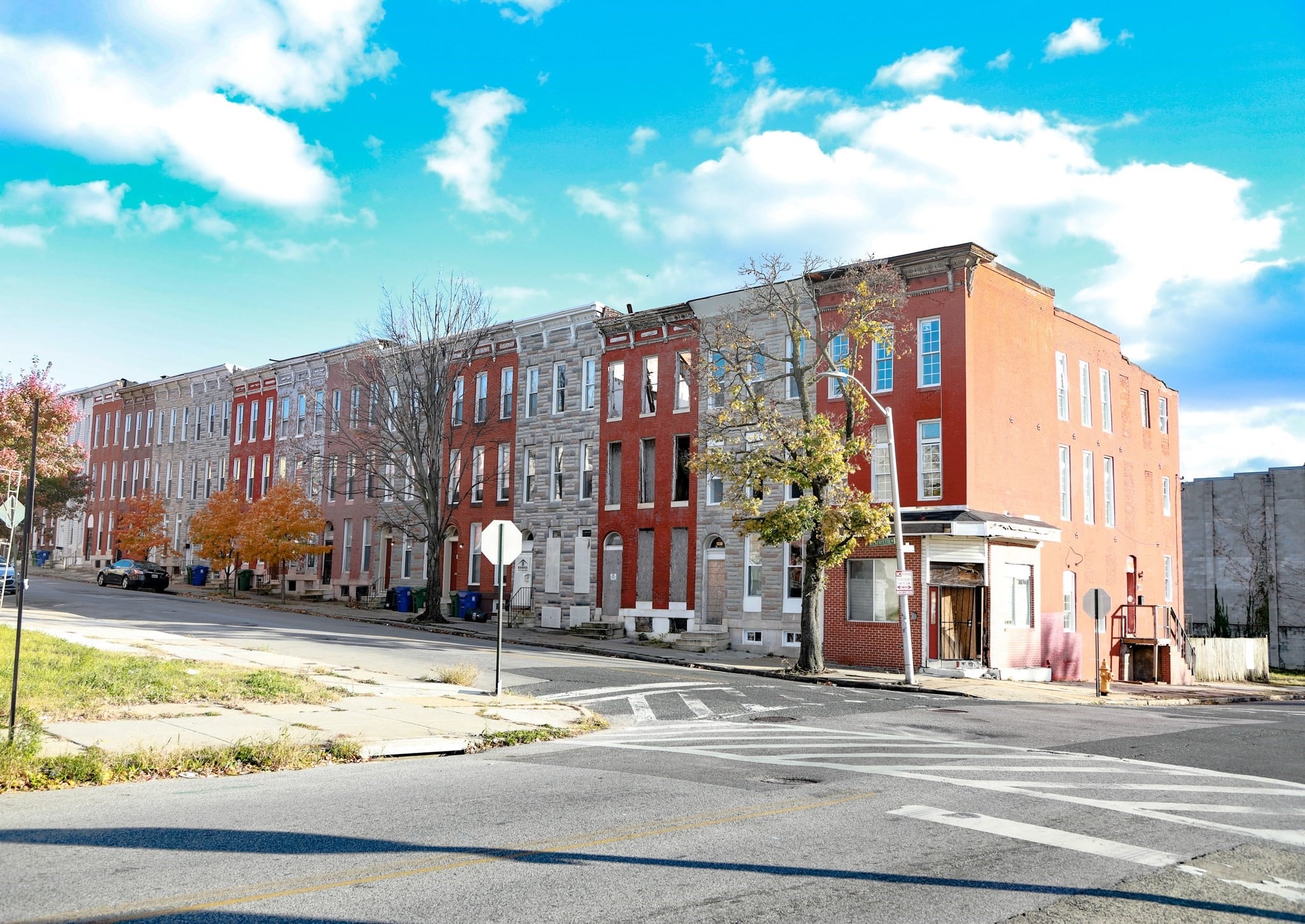
[Editor’s Note: The Baltimore City Council is meeting at 5 p.m. on Tuesday, January 18 to discuss the Baltimore City Urban Homesteading Program for legacy residents. You can stream it live, here.]
In November, City Council President Nick Mosby introduced legislation to revive Baltimore’s ballyhooed dollar-house program—the fondly remembered urban renewal scheme launched roughly 50 years ago—at least in name.
At the time, his team hailed the bill—which is part of a larger legislative package dubbed “House Baltimore”—as having the potential to close the “city’s racial wealth gap” and shrink the “gulf between rates of white and Black homeownership.”
“For so many working-class Baltimoreans, the American Dream has been a myth at best, and in reality for many, it has been a nightmare,” Mosby, who did not respond to interview requests, said in a statement from his office touting the legislation.
But what Mosby proposes is an altogether different enterprise than its namesake, according to Robert Embry, who created the original program as commissioner of the Baltimore Department of Housing and Community Development.
“I don’t think [Mosby’s plan] has any analogy to the dollar-house program of the 1970s,” says Robert Embry, now president of The Abell Foundation. “It doesn’t mean it’s good or bad. It’s just different.”
The most significant difference between the initiative proposed by Mosby and the original dollar-house scheme was Embry’s emphasis on creating a cost-neutral program. The original required public financing, Embry says, because banks wouldn’t provide mortgages for properties included in the program since they cost more to fix than they were worth.
However, Embry saw an opportunity to create a program that kicked into city coffers through public financing. Baltimore supplied debt to rehabilitate the vacant homes through a combination of funds from a federal rehabilitation loan program and capital provided via the city bond issue. Baltimore then loaned that money to homebuyers at a higher interest rate. (In other words, if the city issued bonds at four percent, it then loaned those funds to the dollar home purchaser at five percent.)
“So, the city made a little money,” Embry says. “Plus, it took a house costing the city money to board up…and put it back on the tax roll. The city was getting not only the increment on the bond money, but getting property tax from a building that was not paying any tax.”
By comparison, Mosby’s plan requires homebuyers—who would essentially lease the homes from the city for two years for $1 per year—to secure private debt to fund rehabbing the homes.
The broader “House Baltimore” legislative package includes grant funds up to $25,000 to repair homes. (Mosby, and council allies, propose spending $200 million from one-time federal funds via the American Rescue Plan Act, intended to offset costs associated with the COVID-19 pandemic).
One issue with that is that rehabbing a vacant home can cost upwards of $80,000 or $100,000—far exceeding the proposed $25,000 grant. Meanwhile, banks still aren’t likely to provide mortgages for properties included in the program since they cost more to fix than they are worth. It’s the same issue Embry overcame with public financing, which is not part of the current proposal.
Nneka Nnamdi, of Fight Blight Bmore, told the Baltimore Sun in late December that her organization does not support the legislation. She said there’s no assurance the initiative and homes will be affordable to those the legislation is aimed at, adding that there is not a provision for the city to offer low-cost mortgages, as there was in the original dollar-housing plan. “We can’t trust the banks to do this,” Nnamdi said. “The banks will protect their interest, but they will not protect the interest of the people.”
Mayor Brandon Scott has not weighed in publicly on the proposed legislation from Council President Mosby, which is not expected to garner support among the City Council’s progessive members. Scott has said he plans to introduce a housing initiative, using part of the $641 million in American Rescue Plan Act funding, this year.
Another significant difference between the dollar-house strategies is the target homebuyers. In the years following President Lyndon Johnson’s “Great Society” programs, an abundance of initiatives intended to provide housing for the city’s poor took root in Baltimore.
At that time, Embry says, Baltimore needed an influx of wealthier residents, particularly people who lived outside the city and could afford a home. “We wanted to attract more middle-income people to the city who were paying more in taxes than they were consuming in services,” he says, “so I began the dollar-house program.”

Mosby’s legislation, however, makes it clear its goal is to boost homeownership among long-time residents, particularly Black working-class residents who have never had the opportunity to own a home. Specifically, the legislation identifies first-time homeowners and legacy residents of disinvested neighborhoods. The act also includes preferences for families making less than 80 percent of the area median income, roughly $83,000 a year.
Additionally, there’s the location of the vacant housing stock targeted by the program. Properties sold via lottery in the 1970s were in city-owned clusters in historic neighborhoods around downtown, including Federal Hill and Otterbein. These areas were initially slated for demolition as part of a defunct proposal to extend I–95. Among others, those initial programs attracted a young Baltimore developer named Bill Struever, who got his start rehabbing homes in Federal Hill.
Mosby’s reinvented program, according to the bill, covers properties in disinvested neighborhoods traditionally “overlooked by investors and revitalization initiatives, or historically subject to redlining.” For properties to qualify under the proposed dollar-house program, the surrounding neighborhood must have assets, including public markets, public spaces, transit corridors, and emerging real estate development activity.
Despite differences, those who worked to revive the dollar-housing program, in one form or another, see potential in Mosby’s plan, even if it’s not their design. Former Councilwoman Mary Pat Clarke was the most recent legislator, before Mosby, to push for a dollar-house revival. Since leaving office, she continues to work with various advocates for neighborhood-driven redevelopment.
She says that few examples of programs like the original are still talked about with reverence decades after they ceased operating. If done right, she says, the reinvented dollar-house program should and could again serve as a model for other cities.
“There are examples, but this would help put us on the map again in a positive way,” Clarke says.
All in all, the new program may struggle to live up to the memories of the original, but that doesn’t mean the current proposal is inferior. It’s just hard to live up to a program that many residents don’t fully understand, and can now only view through the warm patina of nostalgia.
“I don’t think a lot of people understood it,” Embry says. “They thought the city was giving away houses for a dollar that were getting fixed up. And why don’t we do that with all the vacant houses? It was one of the few, if only, efforts to attract middle-income people back to Baltimore. I think its popularity, and even knowledge of it, is mainly a middle-income phenomenon.”
